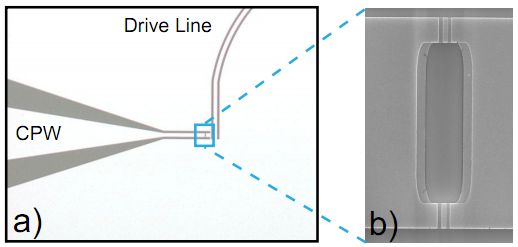|
|

量子理论认为,可以使用被认为存在于量子真空中的“虚拟粒子”来制造可见的光子,但该理论一直未获实验证实。据美国物理学家组织网6月6日报道,最近,瑞典物理学家称,他们运用特制的设备,在“什么都没有”的真空中制造出了可见的光线。如果该实验获得证实,将是近年来量子效应最奇异的实验证据之一,同时也是一个“意义重大的里程碑”。该研究论文已发表在物理学界著名的免费电子网站 arXiv.org上。
量子理论认为,真空实际上是一片不停波动的能量之海,粒子在其中和万物之间来回转化。这些粒子稍纵即逝,因此常被认为是“虚拟粒子”。然而,它们拥有切实的量子效应。
例如,如果两个镜子被极端接近地放置在一起,能够存在于其间的“虚拟”光粒子(光子)的数量是有限的。这意味着更多虚拟光子存在于镜子之外而非镜子之间,它们会创造出一种卡什米尔力,让这两面镜子紧紧依附在一起。卡什米尔力最初由荷兰的亨里克·卡什米尔于1948年提出,其不能在经典物理范畴内得到解释,是一个纯粹的量子效应。
几十年前,理论学家们就预言:一块快速移动的镜子也能产生同样的效应。该理论认为,一块镜子能从落在其表面上的“虚拟”光子那儿获得能量,接着,像真实的光子一样重新发出这些能量。不过,只有当运动的镜子以非常接近光速的速度通过真空时才会出现这种效应,但普通的机械装置很难做到这一点。
瑞典查尔姆斯理工大学的物理学家佩尔·德尔辛和其同事使用一块名为超导量子干涉设备(SQUID)的装置巧妙地避开了这个问题,SQUID是用于测量极端微弱信号(例如人体电磁场的微弱变化)的设备,该设备对磁场相当敏感。
他们制造出了一块超导电路并将SQUID放置其中,SQUID扮演镜子的角色,通过 SQUID的磁场会让这面“镜子”轻微移动,每秒几十亿次地改变磁场的方向,“镜子”的“摆动”速度会达到光速的5%,此时研究团队观察到,一大片震动的微波光子如天女散花般从真空中“落下”。进一步分析后发现,正如量子效应以前所预测的那样,光子的频率几乎是其“摆动”镜子频率的一半。
同样从事量子效应研究的美国哈佛大学物理学家费德里克·卡帕索表示,这是一个非常重要的进步。尽管该效应因其无法产生大量的光子而目前没有实际用途,但却能很好地演示量子效应。未来,一块运动的金属会从真空中制造出可探测的光线。
(PhysOrg.com) -- A group of physicists working out of Chalmers University of Technology in Gothenburg, Sweden, have succeeded in proving what was until now, just theory; and that is, that visible photons could be produced from the virtual particles that have been thought to exist in a quantum vacuum. In a paper published on arXiv, the team describes how they used a specially created circuit called a superconducting quantum interference device (SQUID) to modulate a bit of wire length at a roughly five percent of the speed of light, to produce visible "sparks" from the nothingness of a vacuum.
The experiment shows that the Casimir effect is not just theory; named after Dutch physicist Hendrik B. G. Casimir who along with Dirk Polderfirst first proposed back in the late 1940’s, the idea of a force that existed in a vacuum; a force that should, if manipulated just right between two plates, or mirrors, result in the creation of photons.
The thinking goes that in any vacuum, virtual particles come into existence and then disappear on a constant ongoing basis; and they do so in waves. The Casimir effect proposes that if two very tiny mirrors were to be placed very close together; close enough that the distance between them would be smaller than the length of some of the virtual waves, a force would be created as the number of particles outside of the space between the mirrors grows higher than the number that exists between them, causing a pull on the mirrors, dragging them closer together. The force that is created, it has been theorized, could then be used to generate photons.
Later researchers proposed that the same effect could be achieved using just one mirror if it were moved back and forth very quickly; and that’s the approach the team took in the experiment. The quick movement of the mirror serves to separate pairs of virtual particles which then provide the energy to convert the virtual particles into real photons, which is what happened in the SQUID, allowing the team to see the photons that were produced.
Such research, while theoretically satisfying, doesn’t really offer much in the way of practical applications, at least not at this time; but that’s not to say that new developments that arise as a result of this research couldn’t conceivably lead to something more profound, such as a means of harnessing energy from the vacuum of space to be used to push a vehicle as it travels throughout the universe. |
|